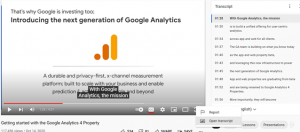With over two billion active YouTube users watching over 1 billion hours worth of video content every day on YouTube, the “video tree” is ripe for the picking. YouTube and video platforms are the way of the future and here’s your proof: Nearly 75% of adults in the United States use YouTube in some way or another. Additionally, “over 40% of Americans’ daily digital video intake is now on mobile devices, with video the third most popular activity on these devices.”
Even by looking at just those few statistics, taking on YouTube keyword research and ranking optimization might well be a boon for you, your business, and your YouTube channel. Get ahead of the curve by understanding the importance of YouTube keyword research and the subsequent data points and analysis that can come from improving your YouTube channel.
Do I Need to Do YouTube Keyword Research?
So you’ve decided to go down the route of optimizing your YouTube channel but you’re in a bind: you need to improve SEO on YouTube for your channel but you’re unsure how exactly to perform the right YouTube keyword tips and tricks. Luckily, YouTube ranking optimization can be rather simple when the right steps are taken and effort is put into performing YouTube keyword research.
If you have a popular enough channel or are comfortable in how your YouTube videos rank on search engine results pages, you may be a bit wary of even performing YouTube keyword research to further improve SEO on YouTube. However, it’s more than likely worth putting aside that fear and optimizing your channel.
Therefore, YouTube ranking optimization is important not only to improve your search engine results page ranks but also to better serve your consumer and make your channel a more user-friendly area on YouTube itself.
Going back to the initial question then: yes! You should indeed implement a YouTube ranking optimization strategy using keyword research. We have some tips listed below to help you out in your next steps.
YouTube Keyword Tips
You’re asking yourself this very question: “How do I improve SEO on YouTube because it’s a fairly broad topic to cover?” Correct, but also there are guidelines and best practices, like any website, that come with improving keywords and optimization.
Here, then, are some YouTube keyword tips:
- Although the site is the world’s second largest search engine, don’t solely do research on YouTube for what the trending keywords are surrounding your topic. Focusing on Google keyword research will help you understand the breadth of what users are looking for when searching a topic. And remember: performing keyword research for your YouTube video or channel should be methodical but also have a feel of discovery about it.
- Once you have a few keywords you want to have distributed throughout your YouTube channel and on individual videos, you need to make sure that you’re being strategic. Just as you would approach organic SEO traffic, the circulation of the keywords on your YouTube channel or video should be strategic and tactical. Although there are many areas to improve SEO on YouTube on individual videos, two factors to focus on are the video description and any closed captioning or transcription.
- Video Description: Focusing on the video description of the YouTube video you’re uploading is vital as it has the most amount of space for text. Although the limit of the meta description section is 5,000 characters — which is a lot! — it is recommended that channel admins keep the character limit to about 1,000, which is equivalent to 250 words.
Many YouTube channel administrators will stick to a proven templated method of creating their video descriptions while others will take every video description created as its unique entity. Whatever works best for you is fine but if you do use a template, here is a description breakdown of what some see as being useful:
- Up to 3 sentences describing the video in more generic terms, including 2 to 3 researched keywords
- A more detailed description of the video
- Whether leading users to sign up for an email newsletter or subscribe to the YouTube channel, etc., insert a call to action
- Add any links not inserted in the CTA area like links to a website or social media profiles
Here’s an example of the video description of a Google Analytics YouTube video:

Closed Captioning: Utilizing closed captioning is not only helping those that need to use closed captioning for ADA compliance, but also it’s another great opportunity for Google and YouTube to understand what your video is about.
Submitting a transcript for use in closed captioning, especially if the person or people in the video say the researched keywords, will help YouTube and Google intuitively understand the intent, meaning, and content of the video. Submitting a transcription file (usually an SRT file) will allow users to easily read the closed captioning as well as view the transcript.
Here’s an example of the transcription of a Google Analytics YouTube video:

More than just updating a video’s description or transcript, other areas where a YouTube user can increase video or channel engagement through YouTube keyword research could be from a video’s file name, video title, tags, and even through the delivery of content.
If you’re serious about battening down the hatches and getting serious about improving SEO on YouTube, like a car, a deep clean of a house, or even just taking care of yourself, there should be regular maintenance of your YouTube videos and YouTube channel.








